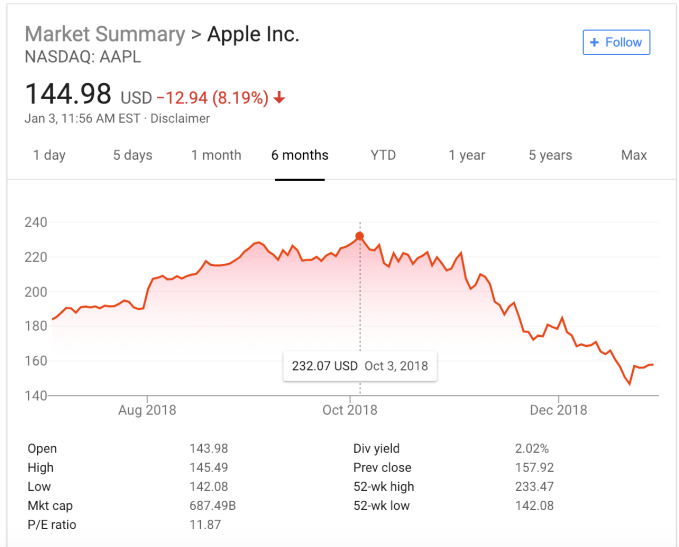While Facebook continues to repair its image with consumers disenchanted with the social network’s role in disseminating misleading or false information and mishandling their personal data, it’s ironically been finding some traction for its enterprise-focused service, Workplace. Today, the company announced that it has added another huge company to its books today: Nestle, the coffee, chocolate and FMCG giant with 2,000 brands and 240,000 employees, has signed up as its latest customer.
Facebook’s enterprise service competes against the likes of Microsoft Teams, Slack and smaller players like Crew and Zinc, among many others in a crowded market of mobile and desktop apps built to address a growing interest among organizations to have more user-friendly, modern ways for their employees to communicate.
Workplace positions itself as different from its competitors in a couple of different ways: it says its communications platform is designed for all different employment demographics, covering so-called knowledge workers (the traditional IT customer) as well as waged and front-line employees; but it also claims to be the most democratic of the pack, by virtue of being a Facebook product, designed for mass market use from the ground up.
In the workplace, that translates to apps that do not require company email addresses or company devices to use; a strong proportion of employees at Workplace’s bigger customers, such as Walmart (2.2 million employees) and Starbucks (nearly 240,000 employees) do not sit at desks and, until relatively recently, would not have been using any kind of PC or phone on a regular basis on any average day.
But as smartphones have become as ubiquitous as having your keys and wallet, acceptance of having them and utilising them to communicate workplace-related information has changed, and that is the wave that services like Workplace are hoping to ride.
But despite the strong engine that is Facebook behind it, Workplace has a lot of challenges up ahead.
The company has not updated its total number of customers in over a year at this point — its last milestone was 30,000 customers, back in November 2017 — and today Facebook VP Julien Codorniou said that the company might put out a more updated number later this year.
“We’re not using that metric to communicate our success,” he said, “but we have to communicate growth, I feel the demand from the market.” Slack claims 500,000 organizations, over 70,000 of which pay; Teams from Microsoft has some 329,000 customers, the company says.
There is also the issue of how a customer win is actually translating to usage. Last month, a much smaller competitor, Crew, with 25,000 customers, noted that at least some of them were in fact those that Workplace was claiming to have secured.
“Starbucks is theoretically using Workplace, but it’s been deployed only to managers,” Crew CEO Danny Leffel told me. “We have almost 1,000 Starbucks locations using Crew. We knew we had a huge presence there, and we were worried when Facebook won them, but we haven’t seen even a dent in our business so far.”
Codorniou said that this also doesn’t tell the full story. He describes the approach that Crew and others take as “shadow IT” in that the companies don’t talk to central HQ when winning the business. “You can’t give a voice to everyone by going in through the back,” he said. He also contends that it just takes time to deploy something across a massive business. “Workplace only works if you get 100 percent of the company using it,” he added. Notably, today Facebook announced that Nestle has already onboarded 210,000 customers to Workplace.
There is also the bigger question of how these products will develop technically to further differentiate from the pack. For now, it feels like Slack still reigns supreme when it comes to desktop knowledge worker functionality — even without usefully threaded comments — because of the fact that you can integrate virtually any other app you might want to into its platform.
Crew, meanwhile, has differentiated by focusing on providing handy tools to help businesses managing scheduling for shift workers, who comprise the majority of its user base.
While others like Teams, and yes, Workplace, have also added in integrations and their own functionality — Workplace’s most interesting features, I think, are how it has translated consumer-Facebook features like Live into the Workplace environment. But there is still a lot of space for apps to consider what other features and functionality will be most useful and stick for the most employees and for the business customer at large.
It will be interesting to see how and if this is affected by way of a key leadership appointment. Last month, Facebook appointed a new “head” of Workplace, Karandeep Anand, who came to Facebook three years ago from Microsoft (and thus has a close understanding of enterprise software). Codorniou said Anand be relocating to London, where Workplace is developed, and will focus on the technical development of the product while Codorniou focuses on sales, client relations and business development.
Technical leadership for Workplace had previously come straight from CTO Mike Schroepfer, Codorniou said. “We decided that we needed someone full time, here in London,” he said.
It’s not clear if Workplace’s win at Nestle is replacing another product: it seems, however, that it is more likely a trend of how more businesses are making an investment in company-wide communications platforms where they may never have had one before, in hopes of it helping keep employees switched on, linked up, and generally more happy and feeling less like expendable cogs.
“Nestlé is a people-first environment,” said EVP Chris Johnson, in a statement. “We really rely on our talented teams to manage more than 2,000 Nestlé brands worldwide. We help our employees develop and we give them the right tools, so Workplace is a perfect fit.”




